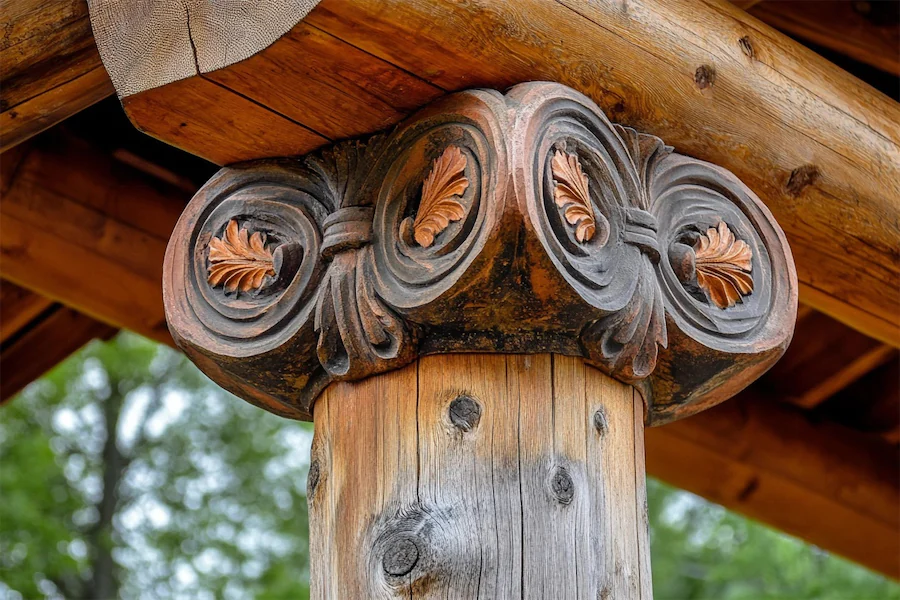Log cabin architecture is celebrated for its rustic charm and harmonious integration with natural surroundings. A defining feature of this style is the use of columns, particularly on porches, which serve both structural and aesthetic purposes.
Introduction to Log Cabin Columns
In log cabin designs, columns are essential for supporting porch roofs and overhangs, providing shelter and enhancing the building’s visual appeal. These columns often showcase the natural beauty of wood, contributing to the cabin’s authentic and earthy ambiance.
Key Features of Log Cabin Columns
- Natural Materials: Log cabin columns are typically crafted from logs or timber, preserving the wood’s natural texture and character. Species such as cedar and pine are commonly used due to their durability and resistance to decay.
- Design and Craftsmanship: The design of these columns ranges from raw, unpeeled logs to more refined, peeled and shaped posts. Handcrafted elements, such as carved details or rustic finishes, often highlight the craftsmanship involved and add unique character to each column.
- Structural Integrity: Beyond their visual appeal, log cabin columns are integral to the structural stability of porches and overhangs, ensuring that these extensions are well-supported and durable.
Applications of Log Cabin Columns
- Porch Supports: Columns are commonly used to uphold porch roofs, creating inviting outdoor spaces that blend seamlessly with the natural environment. For instance, a log cabin porch with cedar tree posts not only provides structural support but also enhances the rustic aesthetic.
- Decorative Elements: In addition to their structural role, columns can serve as decorative features, adding to the cabin’s charm. A log cabin porch with handcrafted log columns exemplifies how these elements contribute to the overall design.
Considerations When Choosing Log Cabin Columns
- Material Selection: Opting for high-quality, durable wood species is crucial for longevity, especially in outdoor applications where exposure to the elements is a factor. Cedar and pine are popular choices due to their natural resistance to decay.
- Maintenance: Regular maintenance, including sealing and staining, helps preserve the wood’s appearance and structural integrity over time.
- Aesthetic Consistency: Ensuring that the columns complement the overall design of the cabin is important for a cohesive look. The choice between rough-hewn and polished finishes can significantly impact the cabin’s aesthetic.
Conclusion
Log cabin columns are more than mere structural components; they embody the rustic elegance and natural beauty that define log cabin architecture. By thoughtfully selecting and maintaining these columns, one can enhance both the functionality and visual appeal of a log cabin, creating a welcoming retreat that harmonizes with its surroundings.
